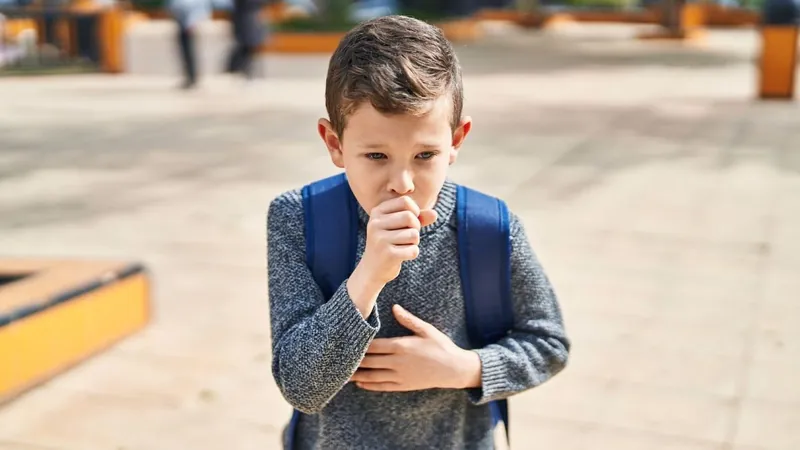
Shocking Whooping Cough Surge in Highly Vaccinated Tuscany: What Went Wrong?
2025-08-28
Author: Li
Last winter, Tuscany, renowned for its rich history and beautiful landscapes, faced an alarming whooping cough outbreak that left hundreds of children ill. This occurred despite the region boasting one of the highest vaccination rates in all of Italy.
In 2024 alone, hospitalizations for pertussis—commonly known as whooping cough—skyrocketed ninefold, catching health officials completely off guard. While nearly all two-year-olds and about 75% of 16-year-olds in Tuscany are vaccinated against this highly infectious disease, it didn’t stop the surge.
Researchers from the European Centre for Disease Prevention and Control (ECDC) dove into this puzzling situation. Their recent study revealed that delays in vaccination schedules significantly weakened the immunity of the young individuals who fell ill.
Italian health guidelines suggest that children receive four doses of the pertussis vaccine by age six, with boosters recommended between 12 and 18 years. Unfortunately, the study indicated that infants experienced delays beyond a month, while adolescents lagged by over a year. Such setbacks made them vulnerable to infection despite being deemed up-to-date in their immunizations.
The research made a striking point: even properly vaccinated kids could have avoided hospitalization if they had received their shots on time.
This issue isn’t an isolated event in Italy. From January to March 2024 alone, over 32,000 whooping cough cases were reported across the European Union and neighboring countries, signaling a widespread resurgence.
The ECDC highlighted a concerning pattern, predicting that large outbreaks could occur every three to five years—even in areas with high vaccination rates. Whooping cough poses the greatest risk to babies under a year old, but anyone can get severely affected.
The worst hit in Tuscany were kids aged 10 to 16, with a staggering increase in hospitalizations jumping from an average of 28 per year (from 2016 to 2019) to a shocking 259 in 2024. Astonishingly, only 7% of cases were among infants—a significant departure from typical trends that usually see younger children bearing the brunt of such outbreaks.
Experts expressed concern over the unusual rise among older adolescents. Countries like Denmark, Spain, and France reported similar spikes during this period.
The ECDC study meticulously tracked vaccination timing, revealing that most adolescent patients had received their childhood vaccinations, linking their infections to diminished immunity rather than parental hesitancy in seeking booster shots.
To combat the situation, researchers underscored the importance of vaccinating children at the earliest eligible opportunity and suggested that Italy’s current window for adolescent boosters may be too permissive.
Additionally, it was noted that 20 hospitalized infants were too young to be vaccinated, and none of their mothers had received the vaccine during pregnancy.
With these findings, the ECDC urged Italian health officials to ramp up public health campaigns to counter vaccine hesitancy and increase awareness about vaccination schedules, stressing the importance of timely immunizations for protecting future generations.

 Brasil (PT)
Brasil (PT)
 Canada (EN)
Canada (EN)
 Chile (ES)
Chile (ES)
 Česko (CS)
Česko (CS)
 대한민국 (KO)
대한민국 (KO)
 España (ES)
España (ES)
 France (FR)
France (FR)
 Hong Kong (EN)
Hong Kong (EN)
 Italia (IT)
Italia (IT)
 日本 (JA)
日本 (JA)
 Magyarország (HU)
Magyarország (HU)
 Norge (NO)
Norge (NO)
 Polska (PL)
Polska (PL)
 Schweiz (DE)
Schweiz (DE)
 Singapore (EN)
Singapore (EN)
 Sverige (SV)
Sverige (SV)
 Suomi (FI)
Suomi (FI)
 Türkiye (TR)
Türkiye (TR)
 الإمارات العربية المتحدة (AR)
الإمارات العربية المتحدة (AR)